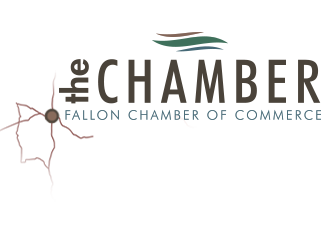History of Fallon

At the turn of the century Fallon was a “dusty crossroads” between St. Clair and Stillwater. The local Native Americans referred to it as “Jim’s Town.” Jim Richards operated his store very near Mike and Eliza Fallon’s ranch house and post office, which had been established in 1896.
Soon rumors flew about a project to build a dam and canal to irrigate, or “reclaim”, desert lands. Following the assassination of President McKinley in 1901, longtime conservationist Theodore Roosevelt became President. He soon signed the papers which established the the Reclamation Act of 1902 and a federal reclamation system began financed from the sale of public lands. The Reclamation Act also created the United States Reclamation Service (USRS).
After this national event, Fallon’s dusty crossroads would never be the same! Mike Fallon sold his ranch to Warren W. Williams, who proceeded to have the land platted and began advertising the sale of lots. Williams laid out the west side of the new town, and named the central street after his native state of Maine. Other streets like, Bailey, Allen and Taylor were named for his friends.
While Williams was busy on the west side of town, John Oats laid out and platted the east side.
In 1903, the State Senator Williams pushed through legislation that formally moved the county seat from Stillwater to the new town of Fallon. Stillwater residents were not particularly pleased with this turn of events, but ultimately conceded defeat. Construction of a courthouse for the new county seat was completed in 1903, and many Stillwater businesses moved to Fallon.
From the very beginning of the new irrigation project, Fallon grew and prospered. Work began on the Truckee River with the building of Derby Diversion Dam in June of 1903. Construction of the 36 mile long Truckee Canal was begun in 1905. Lahontan Dam was completed in 1914, and homesteaders flocked to the area, drawn by a national USRS advertising campaign.
Fallon was officially incorporated in 1908. It was the goal of the new city to provide the finest in services to its residents. With large groups of people expected to homestead the newly reclaimed farmlands, a population of 20,000 was projected in just a few years.
Unfortunately, the scope of the original reclamation project was never fully realized and the city’s population grew at a slower-than-predicted pace. But grow it did, and in 1912 Fallon residents were thrilled when electricity, generated below the Lahontan Dam, reached the city.

The 1920s were the years in which “Hearts-O-Gold” cantaloupes were grown and shipped across the nation. For almost fifteen years, Newlands Project farmers had a near monopoly on cantaloupe sales in Nevada and northern California, for their jumbo-sized melons were of unmatched flavor and quality.
Turkeys raised on Churchill County farms gained a similar national reputation during these years. It was not uncommon for farmers to raise thousands of birds every year, some of which graced the Thanksgiving table at the White House!
Alfalfa has long been one of the most stable sources of income for area farmers. The altitude and moderately warm weather produce the high-protein hay favored by the dairies and feed lots. Today, the valley’s farms produce an average of five tons per acre, with over 70% of the hay shipped out of state.
Fallon became the home of the Fallon Naval Air Station in 1942. In 1959, the runway was extended to 14,000 feet, and since 1972 the base has been a full-fledged Naval Air Station specializing in pilot training.
Fallon has long been known as the “Oasis of Nevada.” This phrase was first used in 1948 by the Fallon Chamber of Commerce, and has stuck with the town since that time. Fallon and its surrounding countryside are truly lush agricultural and cultural havens in the rural Nevada desert.


